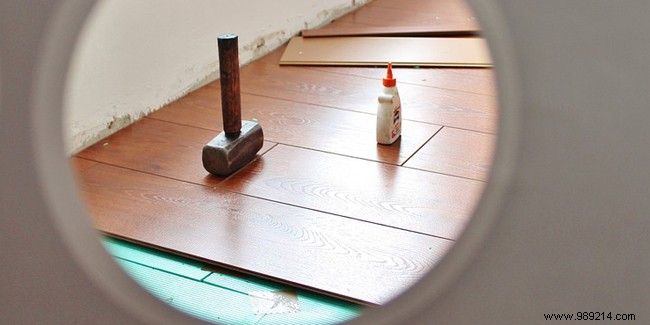
Floating parquet is a floor covering that appeared in the 1980s. In recent years, manufacturers of floating parquet, whether laminate or engineered, have made it easier to install.
Thus, it has become quite possible, and even easy, for individuals to lay their own floating floors, subject of course to following some essential guidelines that we offer in this article.
Once the floor boundaries have been clearly defined and the surface has been deducted from the locations of the skirting boards, you can measure the actual floor surface and buy your parquet accordingly. Be sure to take a small margin just in case, however, because it's always better to have a little more than not enough. Also be sure to take a small 8mm MDF board to make shims from.
It should also be noted that for laminate floors there are different patterns. To make your choice efficiently, it is advisable to sort the planks by pattern before laying to avoid installing two identical planks next to each other. In the case of engineered parquet, unpack all the packages to check the condition of the wood and choose the prettiest planks (some may contain knots or veins). Those with small defects can be reused as parts or cut out for corners, for example.
For the direction of laying, there is no precise rule, it is just customary to lay the parquet in the direction of the light. At the beginning of the installation, start by selecting the boards on the edge and planning their future use in order to determine which ones must be cut (too long or passing through radiators or other obstacles). Don't forget to take the shims into account. Obviously, the length of the boards will not always be equal to that of the walls, which is why it is necessary to measure the cutouts to be made. Lay the boards together and occasionally put a drizzle of white glue in certain joints to make everything more solid. Check that the joints fit well so as not to have a discontinuous floor.
For your kitchen or a child's room, know that you can lay a floating floor on an already existing coating. So, instead of destroying the tiles or carpets, just check that these floors are clean and dry and lay your parquet directly on them. To avoid any risk of rising damp, it is preferable to lay a polyane underlay. If your room is equipped with an underfloor heating system, it is advisable to cut the boards at least 24 hours before laying. Once the floating floor boards have been laid, it is best not to remove the wedges for one or two hours to allow the glue to dry properly.